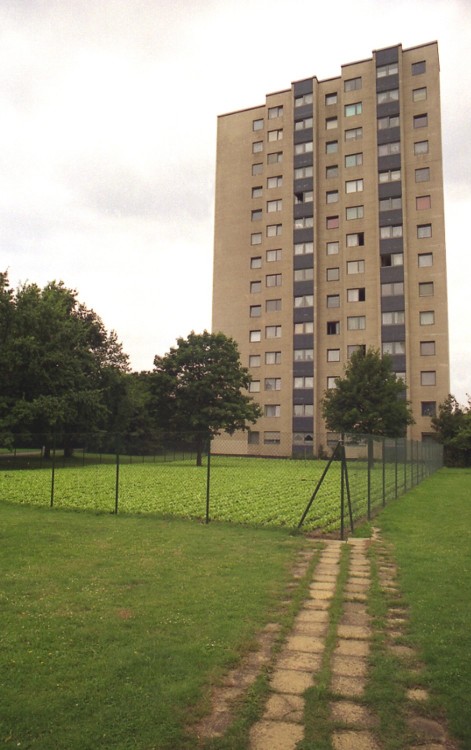SITE-SPECIFIC INSTALLATION
Directly in front of one of the high-rise buildings in Gropiusstadt, 10,000 lettuce heads were grown on a 1200 m² field. The field mirrored the building, with the exact same shape and expanse as the frontal façade of the fourteen story high building. After a period of 5 weeks the salad heads were fully-grown and ready for consumption. They were distributed to the people living in the neighborhood during a one-week harvest period.
Gropiusstadt is one of the biggest areas with tower block architecture in Germany. It was built between 1963 and 1973 and is named after the architect Walter Gropius. Gropius conceived it as a modernist Berlin satellite town with approximately 18,500 apartments, designating 90 percent of the available space as social housing. During the 1980's the area became well known as a crime-ridden area. In time, however, the criminal and unemployment rates went back to an average level, similar to the rest of Berlin. Today Gropiustadt is a middle-class high-rise building complex with 35,000 inhabitants.
The project Lettuce Field as Big as a Sky-Scraper Building directly connects two geographical spaces that are usually far away from each other, despite the fact that their existence presupposes each other. Without a system of large-scale industrial food production densely populated urban areas wouldn’t be possible or would at least look very different. Both of these human interventions into the landscape are characterized by a strictly rational and functional attitude to the use of space. These symmetrical structures, which connect the field and the building, are then mirrored in the manifestation of the work. This spatial and formal harmony would perhaps be rather dull without the project’s further juxtaposition, which points at the contradiction inherent between the usual conditions of agriculture and urban living. Lettuce Field as Big as a Sky-Scraper Building also references the classical artistic principle of utilizing the tension created through the combination of organic and geometrically formal shapes to create a balanced composition. The context and scale of the project, as well as its location in Gropiusstadt, allows the vulnerable cultivation of a field of lettuce to become a metaphor for the architectural and social experiment of a modernist satellite town.
The project was created for “Areale-Neukölln,” a series of temporary public space projects in Berlin-Neukölln in summer 2001.

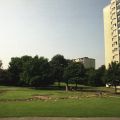
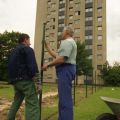

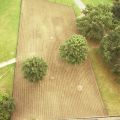

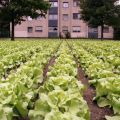

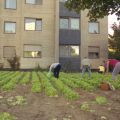

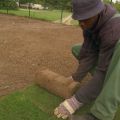
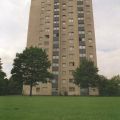
photography: Lothar M. Peters, Helmut Dick
